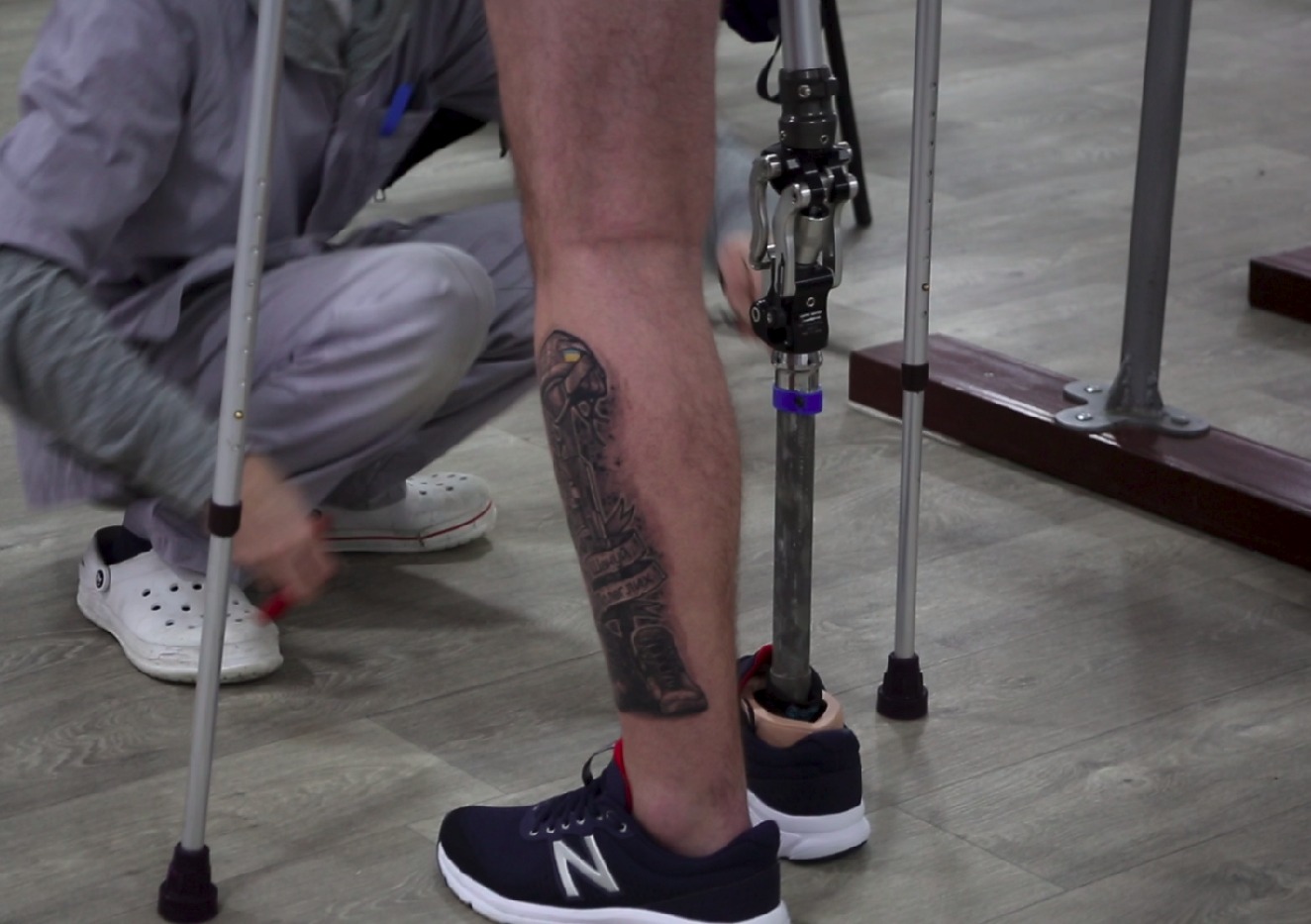In 2014, after the first Russian invasion of Ukrainian territory in the Donbas, soldiers who had lost limbs in battle were seen for the first time in public as they returned home. Since the full-on invasion by Russia in February 2022, the number of maimed soldiers has multiplied by thousands. This led to the Ukrainian prosthetics industry quickly acquiring up-to-date skills and adapting to treating new forms of blast injuries.
The Center for Prosthetics Support initiative led to cooperation and training with the world’s best experts at leading international firms. Domestic manufacturing soon followed.
Prostheses for Ukrainian soldiers are fully compensated by the state, regardless of whether they are made by a private or public company. Euromaidan Press visited the prosthetics enterprise Without Limits, where we spoke with the Center for Prosthetics Support coordinator and witnessed how wounded soldiers are undergoing rehabilitation to return to normal life.
“The majority of prosthetists in Ukraine are already highly qualified. Some, unfortunately, are even more qualified than their colleagues abroad [because of the harsh demands of war]. A prosthetist abroad will mostly not have dealt with amputees that have not been attended to professionally in the operating room – [but] rather stitched-up somewhere in a stabilization hospital on the way from the frontline to the ‘yellow zone’ [behind active battle]. Moreover, a traumatic amputation after an explosion does not usually have a regular shape. Our specialists know how to make prostheses in such cases,” says Olena Tsymbaliuk, co-ordinator of the nationwide Center for Prosthetics Support, an NGO which is consulting, training, and providing support and materiel for Ukrainian private and public companies producing prostheses.
Despite losing limbs, soldiers can still play football, work at tank factories, or even return to the frontline
The prosthetics enterprise Without Limits provided prostheses for 70 wounded soldiers from last May to November 2022 alone. There, we met soldiers who were learning to walk normally again.
Maksym, 25, was wounded on 24 March 2022, in the first month of the full-scale invasion.
“We were among the first wounded who needed prostheses. And almost immediately, a company came to our rehabilitation center and exhibited their prostheses. I decided to go with a prosthesis from them in order to walk as soon as possible,” Maksym recalls.
At first, he received a temporary prosthesis, learned to walk with it, and even played football with it. After a second surgery and full rehabilitation, he was fitted with his permanent prosthetic leg.
“When I’m wearing trousers, I forget that I don’t have a leg. I am amputated below the knee, so I even went to my sister’s wedding and danced there. I can run with this prosthetic leg and play football. We have the best doctors. They quickly put me back on my feet and motivated me. You need the will, time, and patience, these are the three factors, and everything will be fine. I don’t even think it’s some kind of amputation. Sometimes, our guys joke that if a leg is amputated below the knee it doesn’t count, but is a pretence to avoid further military service,” Maksym says.
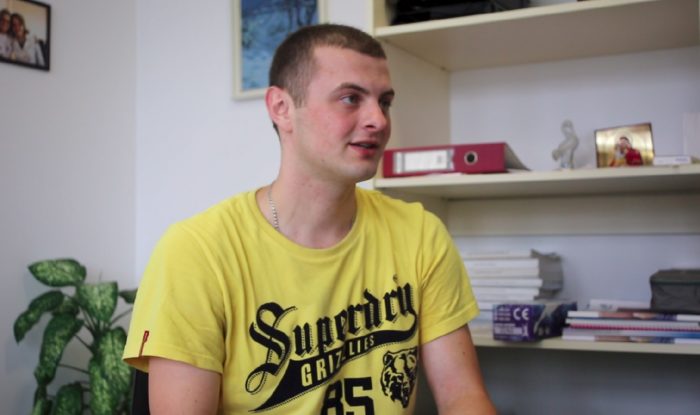
He plans to return to his military unit right after completing treatment. And after the war is won, he dreams of joining Ukraine’s Paralympics Team. He says he has now started trying everything, because life is short.
“Now I have a reassessment, one could say, a life from a new page,” Maksym says, describing his experience.
He fought in the Kharkiv Region in an artillery unit, enlisting in his native Kirovohrad Region in central Ukraine as a volunteer on the fourth day of the invasion.
“I started to think that in 2014-2015, guys [soldiers] gave me the opportunity to study at school, get an education. And now it’s my turn to give someone such an opportunity,” he adds.
Other soldiers, like Dmytro, 34, have more serious amputations. He lost his whole leg. When asked about his feelings while testing a new prosthesis, he answers briefly, “It’s hard.” Yet, he is determined.
“I would like to return to my unit, but I can’t be a burden to the boys either.”
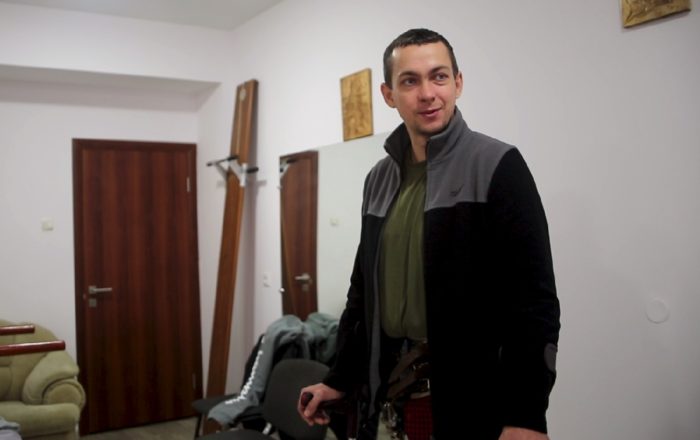
We met Dmytro as he was trying out his new prosthetic leg for the first time. He had already tried walking, though gingerly. The entire prosthetic leg is attached to his pelvis.
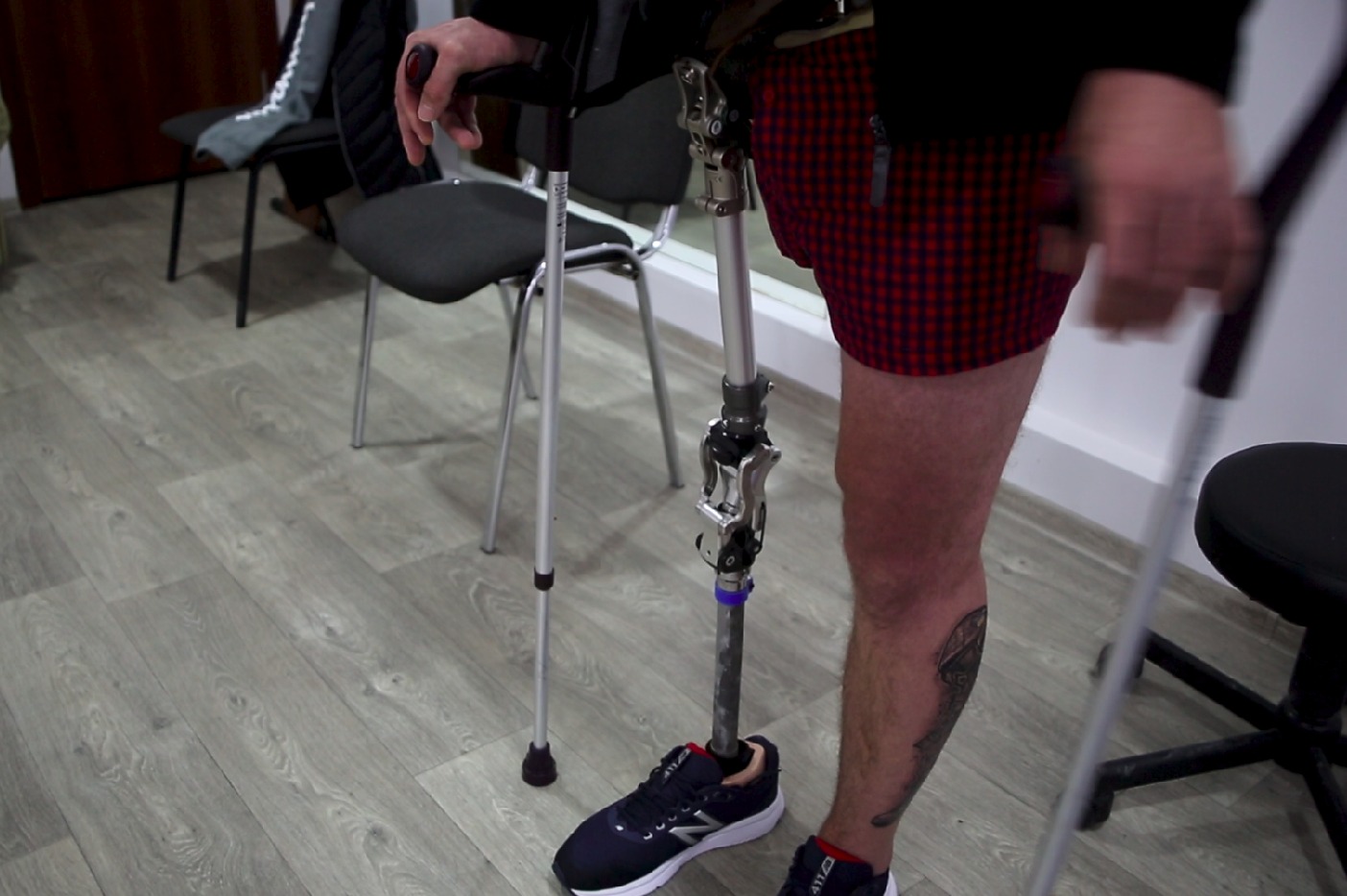
Originally from the central Cherkasy Region, Dmytro also fought for the first time in 2014-2015, when Russia attacked Ukrainian Donbas. Upon returning home, he married and started a family, but in 2022, even before the invasion, he knew he would soon have to return to the service. He was ready.
“My backpack was packed,” he recalls.
In summer 2022, he was defending Sievierodonetsk in Ukraine’s east, the hottest battle spot on the front line at that time. He was wounded by Russian mortar fire.
“The company commander was killed, and my leg was torn off. At first, up to the knee, but after I was taken to hospital, doctors told me they needed to amputate. When I arrived here, I weighed 57 kilograms, and before the injury I was 90. I lost a lot of blood and had to take strong painkillers for two months,” Dmytro says.
Although undergoing rehabilitation in Lviv, in the west of Ukraine, he has already visited his home in Cherkasy twice, where his wife and two daughters await him.
“There was an opportunity to bring the family here, but I did not want the children to see all this rehabilitation. It was already a trauma for them when I arrived. They were scared. They didn’t understand. Well, they are only five years old. But now they call and ask, ‘Dad, do you already have a leg made?’ Of course, I will return to Cherkasy. I was born there. I live there. Everything is fine for me there. Moreover, I love fishing. I have a boat. I can’t do without the river, without the Dnipro. Although I was on business trips all my life, I never thought of living anywhere else,” he says, as he moves forward on his leg.
Dmytro makes several walks around the training room. Then prosthetist Yura Yaskiv asks him how the exertion on his leg feels and adjusts his prosthetic leg.
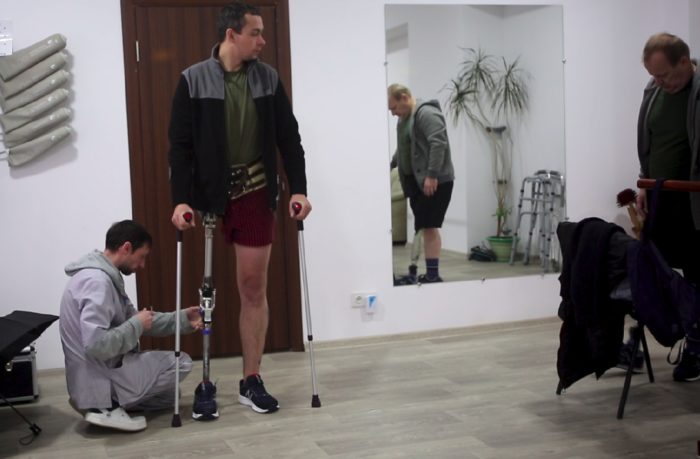
“Is it better now, when I turn it up?” asks Yura.
“Yes, but when I take a step, the prosthesis touches the ground,” Dmytro answers.
“Because you need to make a larger amplitude. Muscles of your back have not yet developed. Try.”
“Will I run?” Dmytro asks.
“Realistically?”
“Yes, realistically.”
“In reality, no. I have never seen someone who could run with a removal [of the entire leg]. When there is still a hip – it is possible. But with complete removal – no.”
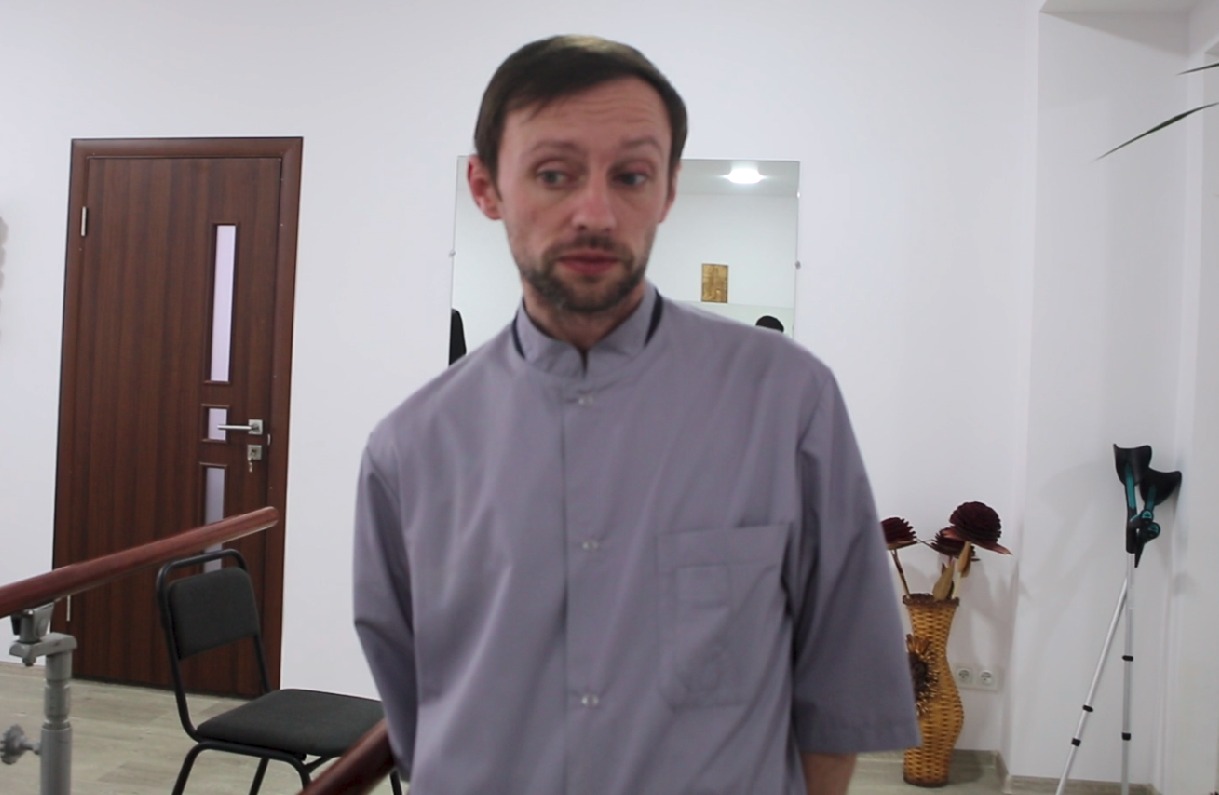
Yura Yaskiv has worked as a prosthetist since 2008 — for 14 years. He says that this year, the demand for prostheses rose dramatically because shelling in the southeastern half of Ukraine has been devastating. Many residents have moved to the western part of the country.
Moreover, amputations are more traumatic than in 2014, when the war began. One of the reasons could be that the full scope of deadly artillery was used in 2022, including cluster bombs.
“We work 24/7 when needed,” Yura says. “We work on Saturdays, and until eight o’clock … until nine o’clock. Now, my family takes a back seat, because these are of primary importance,” he says, pointing to the soldiers who are learning to walk again. Tears come to his eyes.
“They feel self-sufficient”
“The speed and success of rehabilitation depend largely on the will and efforts of the soldier,” says the director of Without Limits, Victoria Olih. Hundreds, if not thousands, of soldiers have already received prostheses and rehabilitation in many Ukraine regions this year.
“Many wounded people came,” says Victoria. “One hundred and sixty soldiers are in a single rehabilitation center … in Velykyi Lubin, and there are many such centers.”
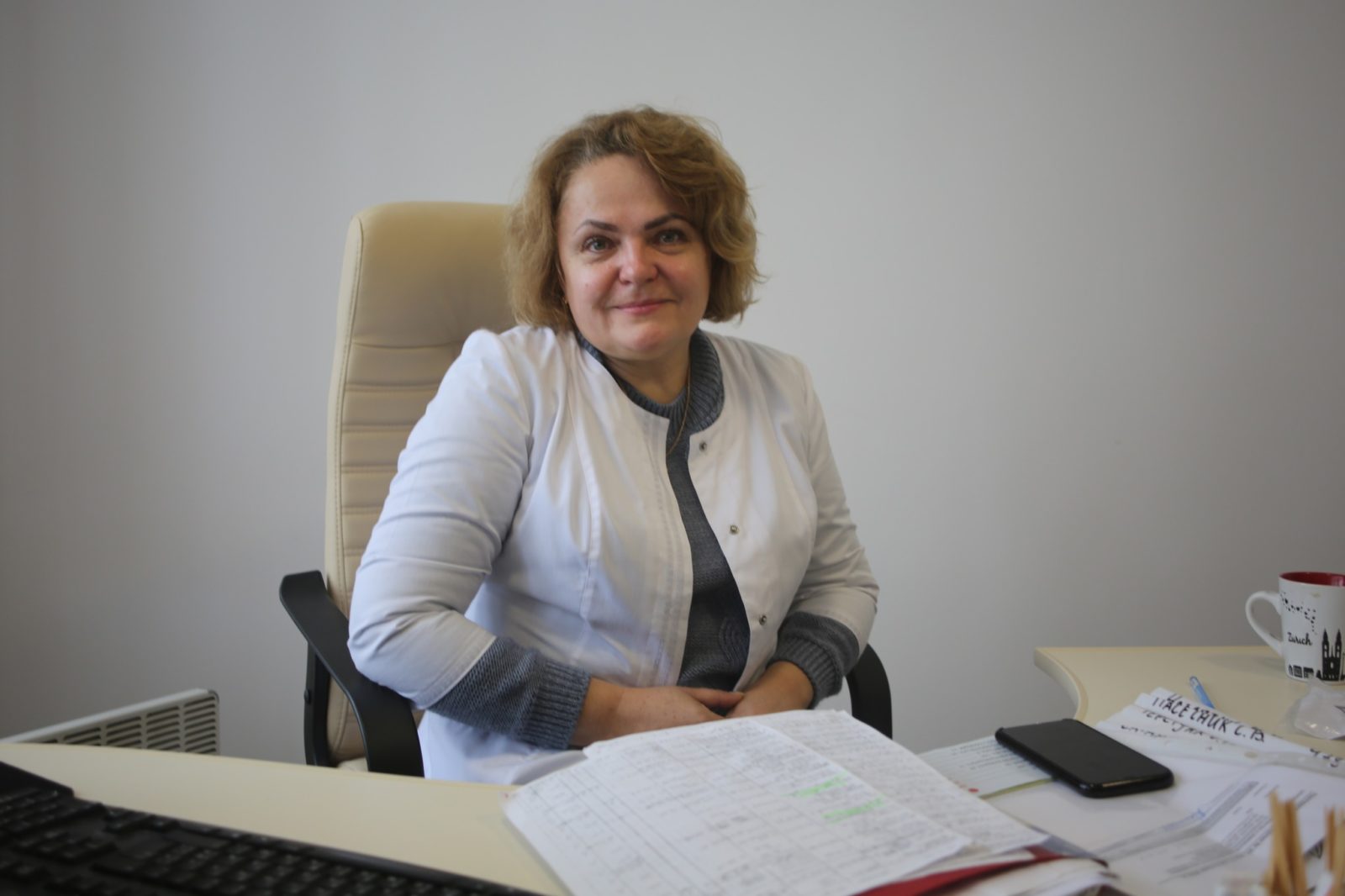
Victoria also says that besides quality prostheses, maimed soldiers receive higher salary and compensation from the state, which raises their confidence.
“Those payments that are from the state, they also sustain many people psychologically. Maybe, before the war, they did not see such sums of money. Now, they have been able to buy cars for themselves. They feel self-sufficient.“
Victoria has worked as a prosthetist since 2000, and for the last four years, at Without Limits.
“Now we have switched mostly to the military, because many of them say, ‘Give me a prosthesis and I will go to the front.’ [Traumatic] residual limbs are very difficult. The traumas are extreme and a limb alters its positioning a lot throughout a day. The weather, medication, and workload — everything has an effect. But we learned to deal with it, and the level of equipment and specialization we can buy with state funding is very high.”
“Most of the injured soldiers go back to their homes in central or eastern Ukraine,” Victoria says.
”They are not afraid of war.”
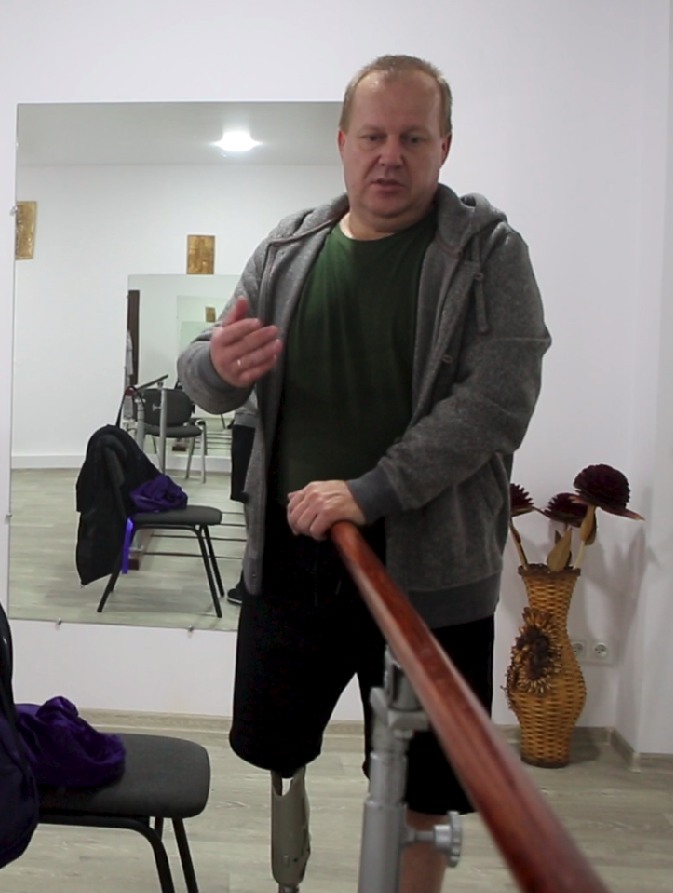
Volodymyr, 49, another soldier who received a prosthetic leg, was returning to his hometown Mykolayiv, a city located 30 kilometers from the front line when we spoke with him.
“Of course, I’m returning. My family is there … my job. Mykolayiv is already freed,” he says.
He wants to continue working at the armored vehicle plant, repairing equipment. He first fought in the military in 2015-2016 in Donbas. When the full-scale war started in 2022, he returned to service. He was badly injured and lost his leg below his knee. It took him three months to learn to walk again. Today, his prosthetic leg is barely noticeable.
“Up to 95% of restored functionality”
Modern prostheses restore functionality by about 95% and can perform the most common movements and functions, says Olena Tsymbaliuk, the nationwide NGO Center for Prosthetics Support coordinator.
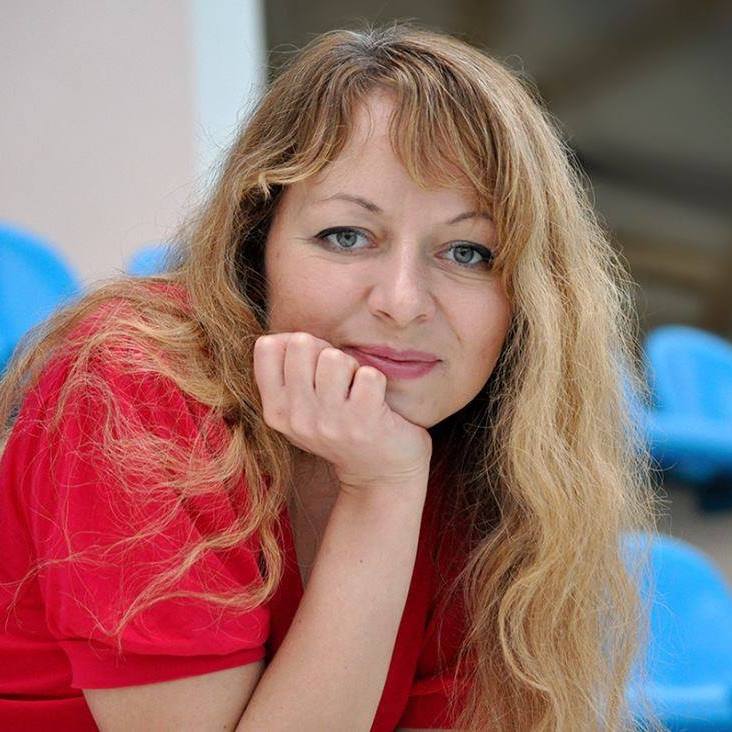
Yet, it takes time to adjust and learn to use the prosthesis correctly. First, soldiers must wait for their wounds to heal and for the pain to ease, which often takes months. Installing the prosthesis is a relatively fast process – usually taking a couple of weeks to a month.
Then, rehabilitation and constant adjustment of the prosthesis begin. Most of the soldiers can walk cautiously within a few days. However, strengthening muscles to support the prosthesis and learning to function with it fully can take several months.
Mechanical and bionic prostheses are the two most popular models. A mechanical hand prosthesis does not match normal contours and may have unsightly attachments, such as hooks, but they help hold an object, rotate the wrist, etc. Myoelectrics look more like a hand, but their functionality is exaggerated, Olena explains.
“Many people think that if a prosthesis looks like a hand, it will replace the same hand. In fact, no prosthesis can 100% replace a lost limb. In myoelectric prostheses today, it is possible to program, at the most, five or ten gestures. Depending on whether a person types on a computer, or wants to lift something heavy, or ride a bicycle, they can vary.”
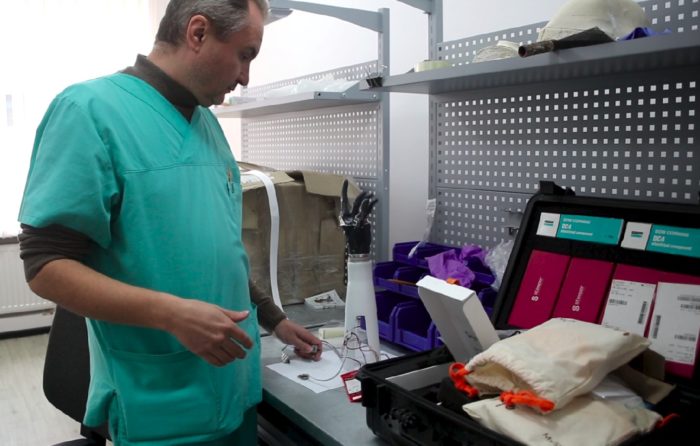
In the Kharkiv Institute, they developed and manufactured sensors for myoelectric prostheses, which read impulses from human muscles. They also produced electric chips for these prostheses.
“All my prostheses work from two sensors that are attached to the muscles and are antagonists — flexor and extensor. According to different combinations of signals, the electric hand works differently and forms different gestures. Such a hand can hold up to 20 kilograms, and helps to perform complex tasks. But the minus, in comparison to mechanical prostheses called body power, is that if the prosthesis has several joints they can be controlled only sequentially by tensing the muscles. Therefore, electric prostheses are not as fast as mechanical prostheses in functioning.”
Denys hopes to revive his institute and return to his native city of Kharkiv when Ukraine moves closer to victory and the shelling stops.
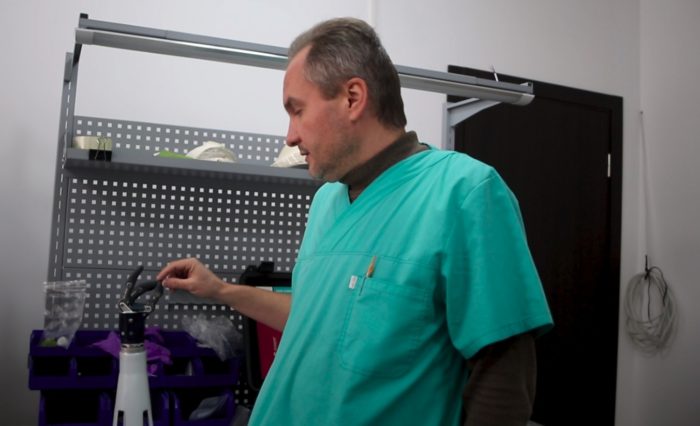
Training and development since 2014 have revolutionized the entire prosthetics industry in Ukraine
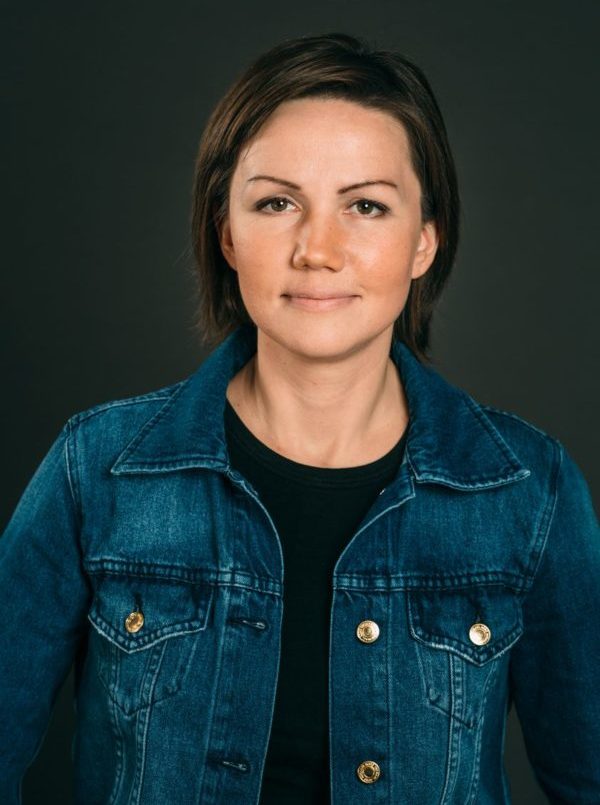
In 2014, the founder of the Center for Prosthetics Support Antonina Kumka contacted the American prosthetist Jon Batzdorff, founder of Prosthetika. They started the first training for Ukrainian prosthetists, where they demonstrated advanced techniques for making residual limb receivers. Such training became extremely popular, leading the center to increase the number of training sessions, using real patients with a range of complexity in their amputations.
At the same time, the center facilitated the production of special sports and myoelectric prostheses at Ukrainian enterprises. Once an innovation, today, it is a routine practice for Ukrainian specialists.
“In 2017, it became clear that ordinary prostheses are not enough for our military, but sports prostheses are also needed. We provided special training and all this also developed in Ukraine. As of now, 99% of the guys who participated in the Hero Games, the Invictus Games, and the Warrior Games, all of them, received prostheses in Ukraine made by Ukrainian specialists,” Olena Tsymbaliuk told us.
It is better for soldiers to get prostheses in Ukraine than abroad
Olena stressed that it is important that soldiers receive prostheses in Ukraine rather than go abroad. It is difficult to travel to other countries to service a prosthesis regularly. Donor funds should be directed to the actual production of prostheses rather than for travel and accommodation abroad.
“It is the same as with any doctor, in the long term. If a person does not have a limb, then they will have to be serviced by prosthetists throughout their life. It is worth finding a prosthetist near the place where they live. A prosthesis is a mechanism that needs constant maintenance, just like a car needs to be serviced. You don’t go to a service station or a tire repair shop in another country.”
Each prosthesis has two parts. The main components for feet, hands, elbows, and knees are mostly generic and are purchased from the best foreign manufacturers, mostly German, Spanish, British, and American. Only two companies produce these in Ukraine, Olena explains.
The second part of the prosthesis, so-called residual limb receivers, where the limb itself is inserted into the prosthesis, are custom-made. The function of the prosthesis depends primarily on how well the residual limb receiver is made. This limb receiver cannot be factory manufactured. It must be made individually by the prosthetist.
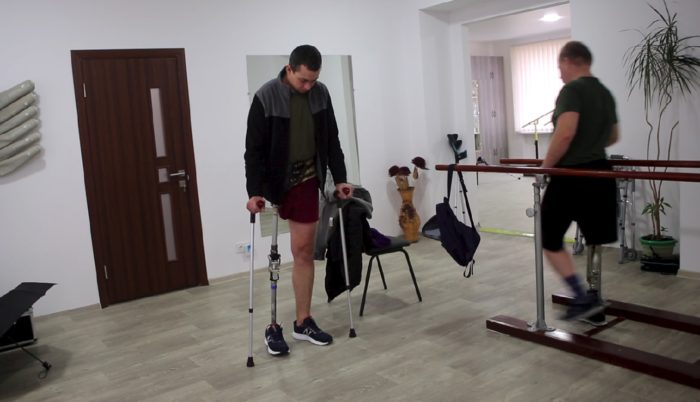
Currently, the state allocates from $10,000 to $50,000 for one prosthetic limb, depending on its complexity. When prosthetists make artificial limbs for the military, the individual’s future plans are also considered. The prosthesis is fitted for future, not only present, functionality.
There was a shortage in financing in the first half of 2022, when prices soared because of the war. However, in October 2022, the funding tariffs were renewed, and today sufficient funding is in place, Olena says. Yet, significant donations are still required because the number of wounded soldiers who need prostheses has increased drastically to multiple thousands.
“Our organization, for example, imports components for prostheses as charity. Private funds can often bring components faster. Some companies help by donating components or selling them at discounted prices, such as the Osfer company. The Razom for Ukraine fund helps with the organization of logistics of components to Ukraine,” Tsymbaliuk says.
Despite the war, prosthetists have continued training throughout 2022.
“For example, in June we took prosthetists to the Netherlands and to Sweden. We are promoting direct socket technology, whereby the residual limb receiver is not made from a plaster cast, but produced directly on the person. It anatomically corresponds to the limb much better and the process is faster. When we went to the Netherlands, our specialists used direct socket technology on 12 people who needed prosthetics, in only three days.”
Olena adds that Anton Johanson, one of the co-creators of the direct socket technology, came to Lviv to train specialists from all over Ukraine for the Without Limits company. Many similar training sessions are ongoing or planned. Prosthetists from all over Ukraine can attend these sessions and then share the techniques they have gained with local clinics and businesses.
Read also:
- Verified ways to help Ukraine and the Ukrainian Army
- The Novovolynsk miracle: how Russia’s invasion turned a Ukrainian mining town into an uber-volunteer hub
- Businesses fleeing war to west Ukraine find a new life and help the army
- Ukrainian theology professor turned sniper tells how to hunt for Russian invaders
- Whoever could, fled the Russians. They went back to Irpin to save the rest
- “The route to life.” How volunteers secretly rescued 75,000 from a city encircled by Russian troops
- Ukraine finally launches domestic ammunition production. How will this impact the war?
Watch also:
https://youtu.be/XguiblDuuqk




